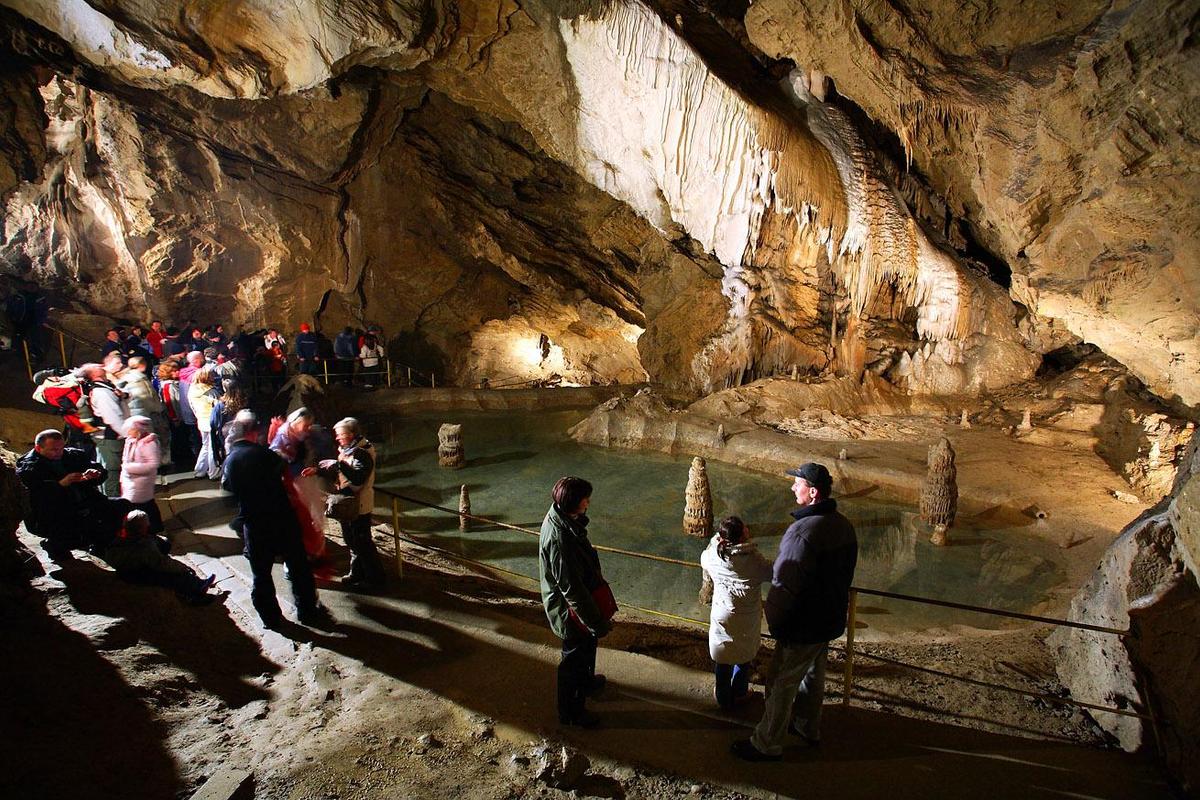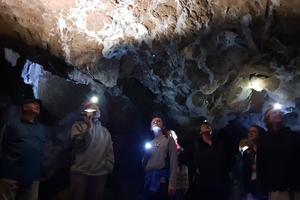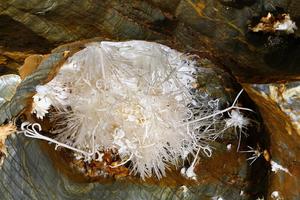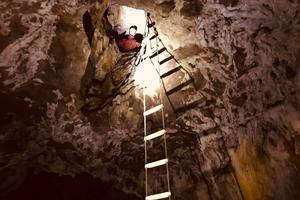This article was prepared for an edition of the Spectacular Slovakia travel guideand was published in the travel guide Slovakia.
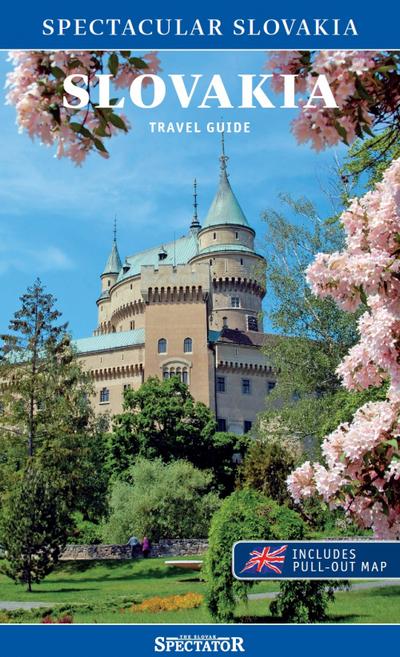
Going into a cave in Slovakia does not have to involve passively admiring the various shapes of stalactites, stalagmites, and stalagnates. Some cave staff offer a helmet and a headlamp, which turns the visit into a real underground adventure.
Slovakia is rich in caves, with 7,000 having already been explored. Twelve of these have been opened to the public by the Slovak Cave Administration (SSJ). A total of six are inscribed on the UNESCO World Natural Heritage List (Domica, Gombasecká, Jasovská, Krásnohorská, Dobšinská Ice and Ochtinská Aragonite).
Ice caves and more in Slovakia
Every cave administered by the SSJ is unique.
Caves in Slovakia
The nature of the glaciations in the Dobšinská Ice Cave (eastern Slovakia) makes it one of the most important caves in the world (it was also among the first electrically lit caves), and the rich aragonite formations resembling white flowers in the Ochtinská Aragonite Cave (eastern Slovakia) are some of the finest in Europe.
The most visited and possibly the most beautiful cave is the Demänovská Cave of Liberty (northern Slovakia), with its majestic domes, hundreds of stairs and a roaring stream inside.
“I’ve been in a cave before, but it wasn’t as fabulous as this one,” said Francesca Orr, a tourist from Manchester, Great Britain.
The Demänovská Cave system is 35 kilometres long and also includes the Demänovská Ice Cave, located three kilometres from the Cave of Liberty.
More typical examples of extensive halls decorated with white sinter and huge stalagmites can be found at the Belianska Cave in the High Tatras or the Harmanecká Cave in central Slovakia.



